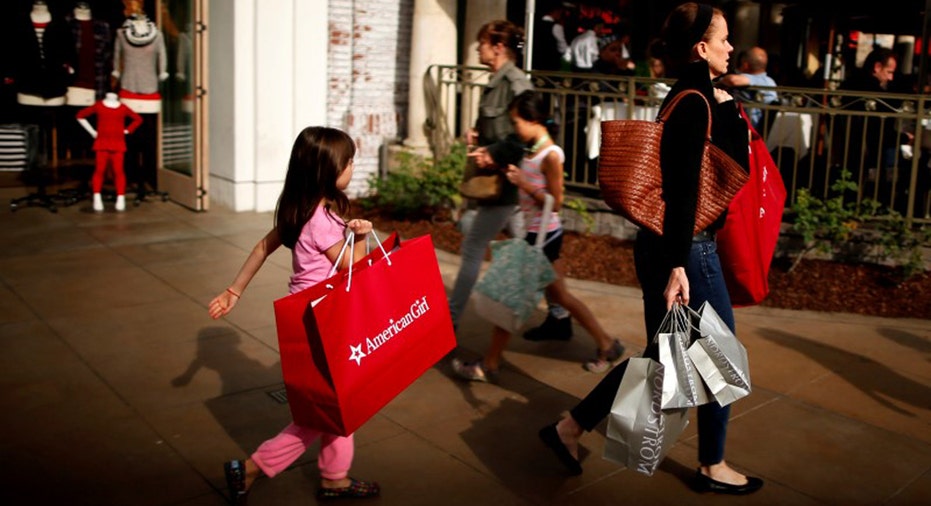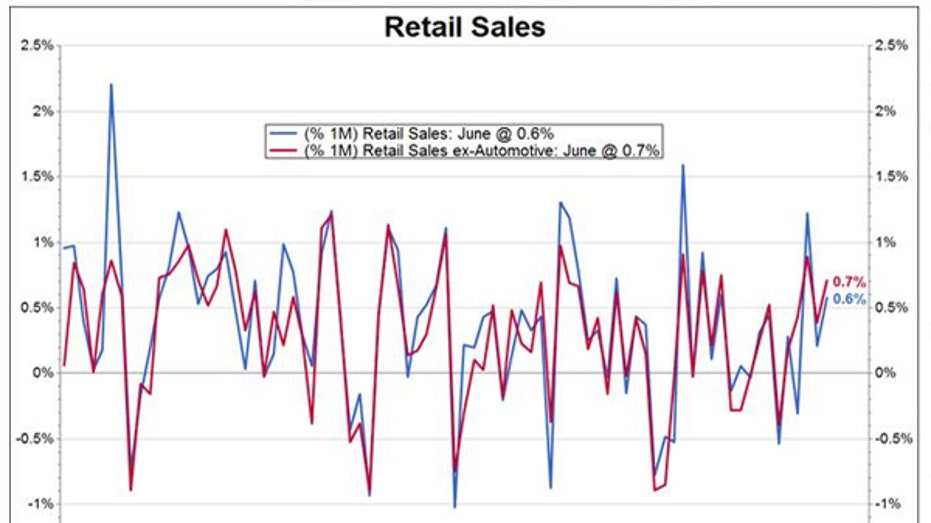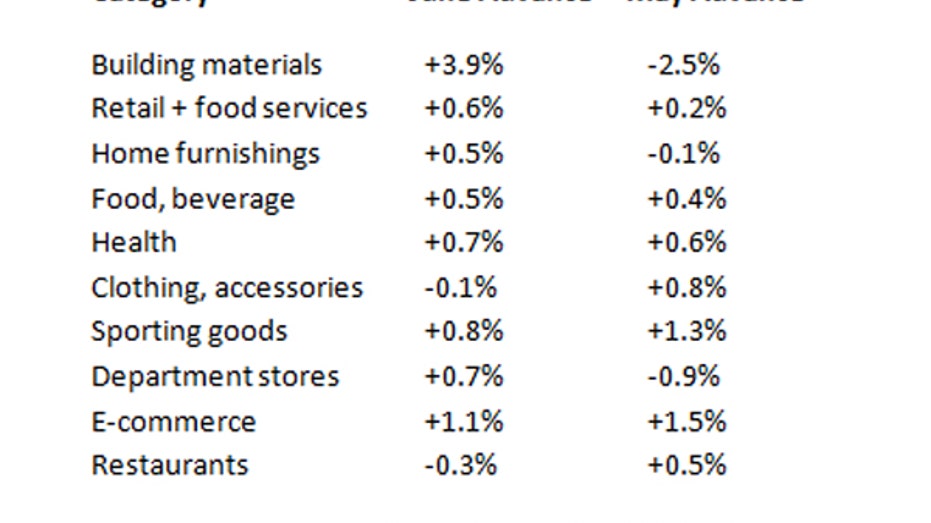Shoppers Keep Spending in Positive Sign for 2Q Growth

After a long stretch of tepid spending, U.S. shoppers are finally willing to open their wallets.
The Commerce Department reported retail sales grew at a 0.6% pace in June from May, well above consensus expectations for a 0.1% rise. Though figures from the prior two months were revised lower, the broad-based June gains represented a 2.7% jump from the year-ago period, helped by strength in sales of building materials, health, sporting goods, hobby stores and online sales.

“On the whole, this morning’s report is supportive of our outlook for a consumer-driven bounce back in second-quarter growth,” Rob Martin, U.S. economist at Barclays, said.
The investment bank upped its tracking estimate of second-quarter real private consumption growth to 4.7% from 4.3%, while its overall GDP tracking estimate rose three percentage points to 2.9%. If realized, the growth would be a big improvement from the prior quarter when the U.S. economy struggled to gain traction. During the first three months of the year, the economy expanded at a 1.1% annualized pace – a drop from the 1.4% fourth-quarter pace, after worries about a global-growth slowdown hit sentiment on Wall Street and bled into Main Street pockets of the economy.
Dollars American consumers had been stashing from their gas savings as a result of multi-year low oil prices were expected to have been spent during the first three months of 2016, but the concerns about the health and strength of the economy forced them to continue saving.

A range of factors could finally be starting to reverse that trend. June retail sales, excluding the volatile automotive component and gasoline, rose 0.7%, and the June jobs report from the Labor Department showed hiring during the month picked up from a drawdown in May.
“Job and wage gains, low interest rates, big savings from lower energy over the past few years, and easing access to credit are all positives for household spending, Gus Faucher, deputy chief economist at PNC said. “Consumers will continue to lead economic growth through 2016 and into 2017.
The U.S. economy continues to show it’s resilience in the face of global challenges – including monetary-policy divergence across the globe, and a shaky investing landscape. Data also out on Friday from the Labor Department showed consumer price inflation remained fairly muted, up 0.2% last month, compared to the expected 0.3% advance. Stripping out more volatile food and energy components, prices also rose 0.2%. On a year-over-year basis, prices rose 2.2%.
Christopher said the ongoing trend of lower commodity prices up against higher services prices is likely to continue in the near term as the strong dollar keeps a lid on price inflation.
“Firming core inflation, along with continuing gains in the labor market, suggests that the U.S. economy is on solid footing. This should reassure the Federal Reserve that domestic demand will sustain the U.S. expansion, setting the stage for normalization on monetary policy,” he remarked.
The U.S. central bank opted last month to keep rates steady as it eyed the so-called Brexit vote the week after its meeting. U.K. citizens stunned the world by voting to end its membership in the European Union, a move that sent shockwaves through global financial markets the following week. However, investors came to terms with the decision, acknowledging the exit strategy would be years in the making, and likely not be a knock on the U.S. economy in the near term.
This week, the broader U.S. equity indexes notched record highs, and expectations for a rate rise at the Fed’s policy meeting in two weeks have moved slightly higher.



















